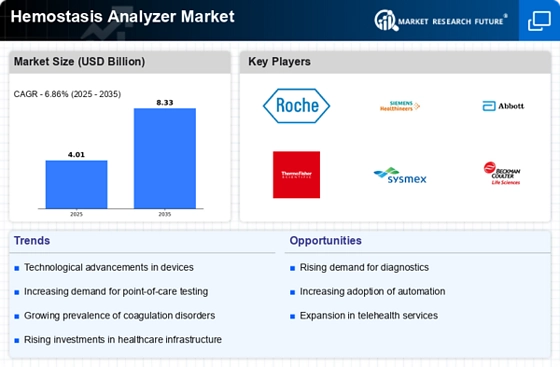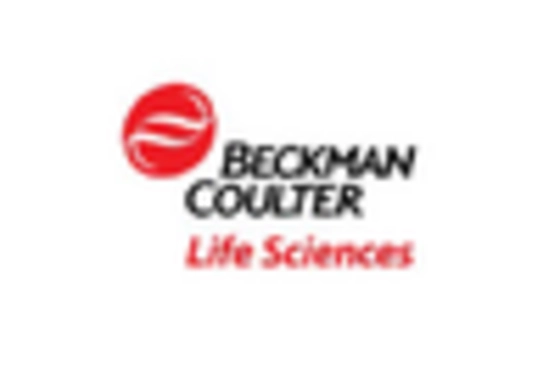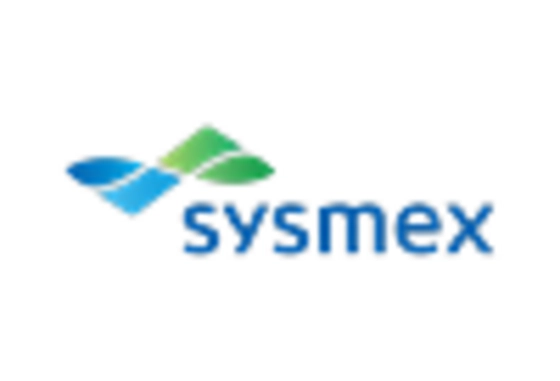Increased Demand for Point-of-Care Testing
The Hemostasis Analyzer Market is witnessing a notable shift towards point-of-care testing (POCT), driven by the need for rapid and accessible diagnostic solutions. POCT allows for immediate results, which is crucial in emergency situations where timely intervention can save lives. The market for POCT in hemostasis is expected to expand as healthcare facilities seek to enhance patient management and reduce hospital stays. This trend is supported by a growing preference among patients for convenient testing options. As a result, manufacturers are focusing on developing portable and user-friendly hemostasis analyzers to meet this demand, thereby propelling market growth.
Rising Incidence of Hematological Disorders
The Hemostasis Analyzer Market is significantly driven by the increasing prevalence of hematological disorders, including hemophilia and thrombosis. As awareness of these conditions grows, there is a corresponding demand for effective diagnostic tools. According to recent statistics, the incidence of hemophilia is estimated to affect 1 in 5,000 live births, necessitating regular monitoring and management. This rising incidence propels the need for advanced hemostasis analyzers that can provide accurate and timely results. Consequently, healthcare providers are investing in these technologies to improve patient care and outcomes, further stimulating market growth.
Growing Investment in Healthcare Infrastructure
The Hemostasis Analyzer Market is benefiting from increased investment in healthcare infrastructure across various regions. Governments and private entities are recognizing the importance of advanced diagnostic tools in improving healthcare outcomes. This investment is leading to the establishment of modern laboratories equipped with state-of-the-art hemostasis analyzers. For instance, initiatives aimed at enhancing laboratory capabilities in developing regions are expected to drive demand for these analyzers. As healthcare systems evolve, the need for reliable and efficient testing methods becomes paramount, further contributing to the expansion of the hemostasis analyzer market.
Technological Advancements in Hemostasis Analyzers
The Hemostasis Analyzer Market is experiencing a surge in technological advancements that enhance the accuracy and efficiency of coagulation testing. Innovations such as microfluidics and automated systems are streamlining processes, reducing human error, and improving patient outcomes. For instance, the integration of artificial intelligence in data analysis allows for more precise interpretations of results. As a result, the market is projected to grow at a compound annual growth rate of approximately 6.5% over the next five years. These advancements not only facilitate faster testing but also expand the capabilities of hemostasis analyzers, making them indispensable in clinical settings.
Rising Awareness and Education on Coagulation Disorders
The Hemostasis Analyzer Market is also influenced by the rising awareness and education surrounding coagulation disorders. Increased educational initiatives by healthcare organizations are informing both healthcare professionals and patients about the importance of early diagnosis and management of these conditions. This heightened awareness is leading to a greater demand for hemostasis testing, as individuals seek proactive measures for their health. Furthermore, as more healthcare providers become educated on the capabilities of advanced hemostasis analyzers, the adoption of these technologies is likely to increase, thereby driving market growth.

















Leave a Comment